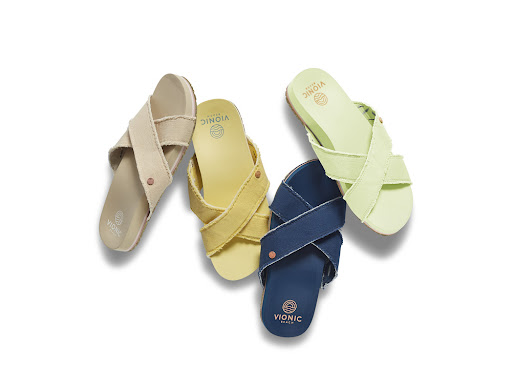 Fast fashion brands have a lot to account for in terms of damaging the environment. It seems like so much of the world has heard the call for sustainability—world governments, citizen groups, and top brands alike have all been making moves to fight for the planet and practice ethical fashion. Backed by science and collective action, climate justice is gaining a foothold across all major industries, including fashion.
Fast fashion brands have a lot to account for in terms of damaging the environment. It seems like so much of the world has heard the call for sustainability—world governments, citizen groups, and top brands alike have all been making moves to fight for the planet and practice ethical fashion. Backed by science and collective action, climate justice is gaining a foothold across all major industries, including fashion.
So what is sustainable fashion?
Sustainable fashion is a production model that seeks to make fashionable more eco-friendly. It envisions a complete overhaul of the fashion industry to pave the way toward a more sustainable world. The proposed changes are massive, affecting everything from the sourcing of materials to ethical production practices to waste reduction and the curbing of carbon emissions.
Sustainable Fashion and Fighting The Fast Fashion Footprint
While sustainable fashion is the wave of the future, it still accounts for only a small minority of apparel produced. The beast that sustainable fashion has set out to slay is called fast fashion.
Fast fashion is the dominant style of apparel manufacturing in the modern world, and it has completely changed the way we think about and consume clothing.
Here’s how it works:
- Gotta go fast – The moniker isn’t a mistake. Fast fashion is fast from start to finish. Clothing is produced as quickly as possible to keep up with trends that change at lightning speeds. Shifting what’s “in” every week makes it easier to sell cheap, niche designs. The clothes are heavily advertised and affordable, but they aren’t built to last– most fast fashion apparel ends up in the trash fast, too.
- Low prices, high turnover – Fast fashion is ultra-affordable fashion. Unfortunately, a low price tag means cut corners, lower quality, and a lot more waste.
- Sell more, make more – Like many modern product-driven industries, fast fashion is focused on quantity over quality. Selling clothing at a bargain means that fast fashion manufacturers and retailers have to move a lot of products to avoid financial losses.
This low cost/high yield style is bad news for the environment. In fact, the fashion industry is responsible for over a billion metric tons of greenhouse emissions every year1– that’s more than international air travel and nautical shipping combined.
It’s clear that fast fashion needs to change. Not only is it extremely wasteful, but it delivers cheaply made poor quality finished products. Consumers deserve better, and so does the Earth. Luckily, sustainable fashion provides us with a brighter vision for the future.
4 Sustainable Solutions to Fast Problems
Let’s get into the nitty-gritty of how sustainable fashion seeks to address the apparel industry’s climate woes. We’ll touch on a few different aspects of the environmental damage caused by fast fashion and provide sustainable alternatives to each outdated practice.
#1 More Efficient Emissions
We’ve already mentioned the incredible amount of carbon emissions produced by the fashion industry. Every step of the current apparel manufacturing and sales system has redundancies that cause higher emissions. We’ll touch on just one- the global manufacturing process.
It’s no secret that fashion is a massive global industry, but you might not be aware of just how much international shipping goes into the process of making clothing. Every company has a different process, but here are the basic steps:
- Raw materials for textile making are harvested and processed.
- The textiles are made and dyed.
- The apparel is produced.
- The apparel is shipped to stores or sold online and shipped directly to consumers.
Each of these steps can (and usually does) involve global shipping. That’s a lot of wasted fuel.
Sustainable fashion seeks to address this issue through a practice called nearshoring2. Companies that use nearshoring produce their products in or directly around their major markets. This not only cuts down carbon emissions but also cuts down on costly shipping delays.
#2 Less Waste
Let’s talk trash. Like, actual trash.
In the United States, roughly 85% of discarded clothing is incinerated or sent to a landfill.3 As these textiles decompose, they release harmful chemicals into the environment and contribute massively toward greenhouse gas emissions.
The first sustainable solution to this problem is simple: produce less clothing.
Some fast fashion brands release new products every week. That’s right, 52 “seasons” a year.4 Apparel companies with a more sustainable mindset produce fewer collections (typically 2-3 a year) that are focused on longer-lasting, higher-quality products.
Another environmentally friendly practice is recycling. However, because of how most clothing is produced, it’s notoriously difficult to recycle. Donation isn’t always a quick fix, either. There’s so much clothing in the world that donation sometimes just moves the waste problem from place to place.
Scientists are pursuing multiple avenues to make recycling clothing easier:3
- Friendly fungi – Researchers in Hong Kong have invented a process to recycle cotton-poly blended fabric into reusable polyester fibers, using a fungus that breaks down cotton into glucose.
- Waste-free wool – Austrian scientists have developed a method to recycle wool into a product similar to resin.
- Super sharp eyes – Researchers in Europe are developing ways to sort through waste fabric more quickly and efficiently using hyperspectral cameras.
#3 Responsible and Organic Materials
The type of textile apparel makers choose to use greatly affects their overall carbon footprint.
- Fabrics like polyester are made from petroleum, a nonrenewable resource.3
- Clothing made from plastic-based textiles can wreak havoc on the ecosystem, releasing half a million tons of microplastic into the waterways each year through washing machines.1
- Producing the leather used for clothing and accessories is one of the driving forces behind cattle farming, a well-known contributor to CO2 emissions.
Thankfully, there are plenty of sustainable alternatives. Are your shoes sustainable? Companies like Vionic, a sustainable clothing brand, have committed to completely vegan apparel, which is amazing news for animal rights activists and sustainable fashion fans alike. Vionic uses responsible and sustainable fashion materials like organic cotton jute, bamboo, recycled rubber, and cork to produce stylish, supportive shoes and sandals for women and men, such as loafers, stilettos, platform, and other women’s flat sandals.
#4 Addressing the Hidden Price of Low Costs
The environment isn’t the only victim of fast fashion (or the textile industry as a whole), and impossibly low consumer prices aren’t possible without cutting corners.
Many of the world’s largest clothing makers rely on underpaid laborers in the third world to keep their costs down. The average garment worker spends long hours in factories under dangerous conditions, making as little as 32 cents an hour.4
Sustainable fashion brands put focus on the well-being of their laborers. (After all, humanity is a part of nature too.) This means using fair trade materials, paying sufficient wages, and maintaining strict health and safety measures on manufacturing floors.
Help Out at Home
After reading about how sustainable fashion is practiced at an industry level, you may be wondering how to participate as a consumer. Check out these tips to help you greenify your closet:
- Thrift and give – Increase your budget for new sustainable clothing by buying part of your wardrobe secondhand or hosting clothing swaps for friends and family. While the reuse of clothing isn’t in and of itself a viable measure for reducing the fashion industry’s overall carbon footprint, it’s a smart way to contribute on a personal level.
- Wear it for longer – Most fast fashion purchases are quickly thrown away. In fact, the average American citizen throws away over 80 pounds of clothing a year.3 Make a pledge to wear your shoes and clothes for longer. Buying from high-quality, sustainable brands can help you achieve a longer-lasting closet.
- Wash it less often – Designate a “rewear” bin next to the laundry hamper for clothes that are worn but not dirty. Washing clothing less often saves water and limits the amount of microplastics leaching into the water supply.
- Shift the way you shop – Opt out of those fast fashion deals and shop exclusively from sustainable fashion brands. Make sure to do a little digging before you buy. A simple Google search could hold the answers to what is—and isn’t—sustainable. Sustainable clothing is more expensive, but the extra cost is worth it for clothes that last longer and help the planet, too.
While the main responsibility for a sustainable future sits squarely on the shoulders of industry, change can’t happen without an invested populace. When you shop sustainably and consider the environmental impact of your daily life, you’re working toward a better future.
Spread the word to friends and family about sustainable fashion, too. After all, we’re stronger together.
Viable Change With Vionic
Be part of the fashion revolution. At Vionic, we trust science. It’s how we developed some of the most comfortable, supportive shoes on the market today. We are also a sustainable brand. The experts at the Vionic Innovation Lab developed the Viomotion footbed technology to support healthier feet and legs through more thoughtful, intentional shoe design.
Because we trust science, we’re also committed to sustainability. Vionic uses sustainable materials—raw and renewable ones like cotton jute and bamboo—and recycled materials, too.
We’re keeping an eye on sustainability because we care about the planet and because we care about our customers. We know that you try to be as ethical as possible when you shop. That’s why we’re proud to offer sustainable, science-backed products that you can feel good about buying.
Check out our selection of walking sandals to see what we mean.
Sources:
- Laville, Sandra. “Stella McCartney calls for overhaul of ‘incredibly wasteful’ fashion industry.” The Guardian. 28 November, 2017. https://www.theguardian.com/environment/2017/nov/28/stella-mccartney-calls-for-overhaul-of-incredibly-wasteful-fashion-industry
- Anzolin, Elisa et Aloisi, Silvia. “How global supply chains are falling out of fashion.” Reuters. 30 September, 2021. https://www.reuters.com/business/retail-consumer/how-global-supply-chains-are-falling-out-fashion-2021-09-30/
- Beall, Abigail. “Why clothes are so hard to recycle.” BBC. 13 July, 2020. https://www.bbc.com/future/article/20200710-why-clothes-are-so-hard-to-recycle
- Kacary, Hannah. “What is sustainable fashion?” Eco Canada. https://eco.ca/blog/what-is-sustainable-fashion/




Leave a Reply